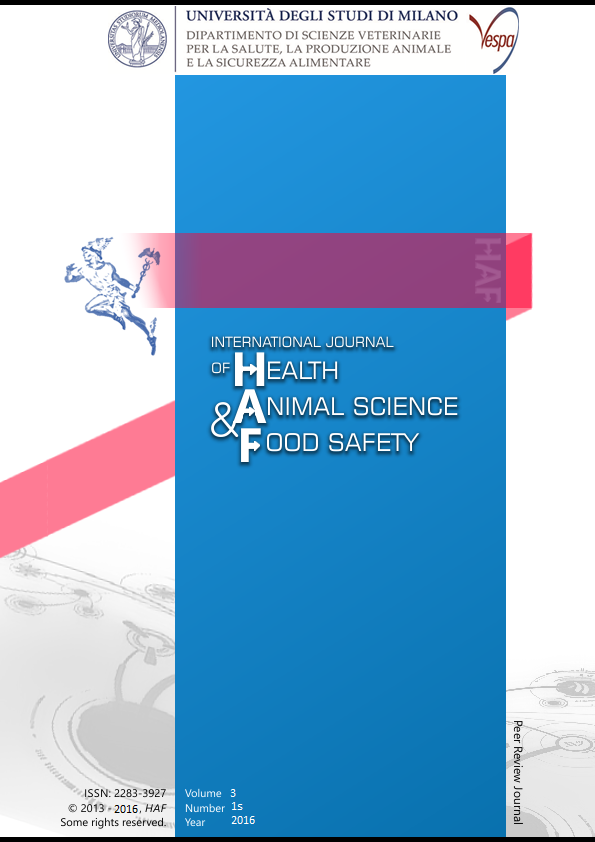Abstract
Mastitis is the major concern for the dairy industry. Intramammary infections cause a complex signaling network that activates the innate immune response, leading to inflammation symptoms. Several types of cells, including endothelial cells, epithelial cells, resident macrophages and other leucocytes, are involved in the immune response. Therefore we aimed to set up an ex vivo model of the mammary gland, where the three-dimensional structure is maintained, assuming that the results were more comparable to the in vivo response. Two mm3 -sections were taken from the mammary gland of a heifer after slaughter and then incubated with either S. aureus lipoteichoic acid (LTA) or with E. coli lipopolysaccharide (LPS) for 1, 3, 6, and 18h. These molecules are constituent of the cell walls of Gram-positive or -negative bacteria, respectively, and are applied as an inflammatory stimulus in the research of mastitis pathogenesis. Quantitative real-time PCR was applied to quantify the mRNA expression of tumour necrosis factor (TNF-α), interleukin (IL)-1β, IL-6, IL-8 (Griesbeck-Zilch 2008), Pentraxin 3 (PTX3; Lutzow, 2008), lingual antimicrobial peptide (LAP) (Günther, 2010;) and of interleukin-1 receptor 8 (IL1-R8; Riva, 2012) and Toll-like receptor 4 (TLR4; Ibeagha-Awemu, 2008). These molecules have been chosen as key factors of the innate immune response. Preliminary results showed that In LPS-treated cells, cytokine mRNA expression increased between 1-3h, while TLR4, PTX3 and IL1-R8 peaked at 3h and then decreased. LAP displayed a different pattern, with the highest values at 3h, slightly increasing up to 18h observation. These data suggest that such ex vivo model could be a valid approach to study the mammary immune response to bacteria.
Riferimenti bibliografici
Günther, J., Liu, S., Esch, K., Schuberth, H. J., Seyfert, H. M., 2010. Stimulated expression of TNF-a and IL-8, but not of lingual antimicrobial peptide reflects the concentration of pathogens contacting bovine mammary epithelial cells. Vet. Immunol. Immunopathol. 135, 152–157.
Griesbeck-Zilch, B., Meyer, H.H.D., Kuhn, C., Schwerin, M., Wellnitz, O., 2008. Staphylococcus aureus and Escherichia coli cause deviating expression profiles of cytokines and lactoferrin messenger ribonucleic acid in mammary epithelial cells. J. Dairy Sci. 91, 2215–2224.
Ibeagha-Awemu, E.M., Lee, J.W., Ibeagha, A.E., Bannerman, D.D., Paape, M.J., Zhao, X., 2008. Bacterial lipopolysaccharide induces increased expression of toll-like receptor (TLR) 4 and downstream TLR signaling molecules in bovine mammary epithelial cells. Vet. Res. 39, 2-11.
Lutzow, Y.C.S., Donaldson, L., Gray, C.P., Vuocolo, T., Pearson, R.D., Reverter, A., Byrne, K.A., Sheehy, P.A., Windon, R., and Tellam, R.L.,. 2008. Identification of immune genes and proteins involved in the response of bovine mammary tissue to Staphylococcus aureus infection. BMC Vet. Res. 4, 18.
Riva, F., Bonavita, E., Barbati, E., Muzio, M., Mantovani, A., Garlanda, C., 2012. TIR8/SIGIRR is an interleukin-1 receptor/toll like receptor family member with regulatory functions in inflammation and immunity. Front. Immunol. 3, 322.
This work is licensed under a CC BY-SA 4.0 international

